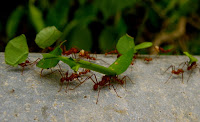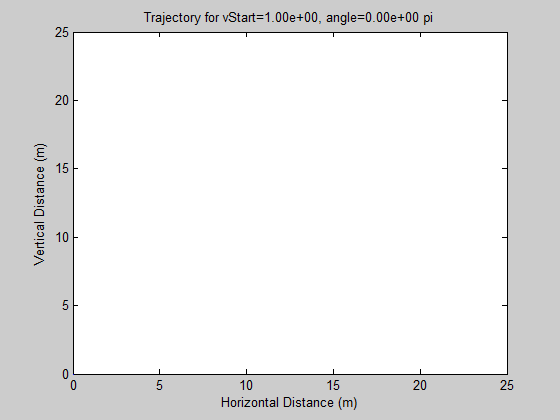Norway shows no scientific evidence of GM food safety
Introduction
In a comment to a pro-GM post, someone served me this post "No scientific evidence of GM food safety".
That sounds suspect, but it is a post about a report by the Norwegian Environment Agency. So what's going on?
The first thing that sprang to mind is the difference between the following two statements:
The first thing that sprang to mind is the difference between the following two statements:
- GM products are safe, because there is no evidence of harm.
- GM products are not unsafe, because there is no evidence of harm.
The first can be false while the second is true. Among others, the first hypothesis requires far more evidence than the second.
The report itself is titled "Sustainability Assessment of Genetically Modified Herbicide Tolerant Crops", subtitled "The case of Intacta Roundup Ready 2Pro Soybean Farming in Brazil in light of the Norwegian Gene Technology Act". This is a case study, not a study of GM in general. The report is in two parts, the first addressing the ecological aspects of the GM plant and its related herbicide. The second part, which we will not consider here, regards social and economic issues.
Note that sustainability in the report title refers to the possibility of people to satisfy their needs without compromising the needs fulfillment of future generations, a notion I fully support.Norwegian biosafety legislation is formulated in terms of the precautionary principle, which means that there is a certain amount of subjectivity involved. In principle, the deciding measure is the scientific uncertainty concerning absence of harm and absence of a mechanism for harm, but the latter is often ignored.
Finally, note that regardless of this report in Norway, Brazil has approved for open-field production, human consumption and animal feed.
The report
The crop under consideration is resistant to both the herbicide glyphosate and Lepidopteran insects, which means moths, butterflies and thus their larvae. The sources of information are a dossier submitted by Monsanto to the Brazilian National Biosafety Technical Commission. Furthermore, they consult relevant literature found by various searching tools.
The Intacta Soybean is a variety developed by Monsanto, resulting from a crossbreed of two GM parental lines that express resistance to one, but not both, sources.
I compiled an image compiling the first five pages, which can be found to the right. At this point, most of the disagreement between the report and Monsanto is in minor details, differences between Continental American and EFSA guidelines. Also note that (right side) they compared the nutritional profile of Intacta to an organic counterpart instead of the conventional non-GM soy in the same study. The write that this is contrary to Monsanto's files, but organic farming generally implies a different scheme that does not focus on yield or economic feasibility. It is thus not surprising that this profile is different.
In the second part, the interaction between Intacta soy and the environment, the first guiding question is not answered. It is important to note that this is an application made to Brazil which is evaluated post-hoc by a Norwegian agency; as a result, the required information is not the same. Based solely on this difference, the report can deem Intacta soy as not sufficiently safe for Norwegian use,
and the study could be used to propel anti-GM propaganda.
The report reiterates the point that combined analysis of different agroecosystems is not appropriate. Here, they explain that this is because difference resulting from the interaction between agroecosystem and the plant may be masked by data aggregation. However, they do not report if the data shows any such tendency nor do they give an example of such interaction in relevant literature.
They discuss a study that shows differences in gene expression and protein profiles between GM and non-GM varieties in different studies, a report that I find lacking in statistics, since it focusses on principal component analysis without addressing statistical significance. Either way, it is unclear if the EFSA guidelines require such an analysis. Given that the report has the intent to show how future evaluations should go, I think they included it as a point of interest and perhaps something warranting investigation if it should be included. I do not know to what extent, if at all, the GM maize agrosystem variation can be generalised.
A rather odd discussion follows. The first state that Monsanto reports similar phenotypical development related to plant metabolism, similar chemical composition and nutritional value at different sites, compared to the GM parental lines and an unspecified conventional control.
They then note several studies that found that different soil types and glyphosate rates can lead to different nutrient content and dry matter, the latter for higher rates. This is not weird; resistance isn't immunity, so the herbicide does affect them. However, they then assert that this indicates that changes in gene expression and plant characteristics. I think this is a leap of faith, as higher rates of glyphosate generally indicates the presence of weeds that take away from the nutrition content in the soil. As a result, you would expect that even after the weeds are killed off, they have still taken nutrition from the ground that cannot end up in the crop. I also find issue with their formulation, which indicates that Monsanto did not address such considerations despite EFSA specifications. However, EFSA was not a factor for Monsanto, as it was applying for approvement in Brazil. No difference in ecological interactions between Intacta soybean, parent lines and conventional soybean were found.
Soybean is a self-fertilizing plant, so that there are only low levels of cross-pollination. Vertical gene-flow, essentially having a GM soybean and a non-GM soybean in neighbouring fields with these possibly fertilizing each other, is nearly non-existent and should be of no concern. Even more so as seed-saving is not common practise in modern agriculture. Horizontal gene transfer, which is between different species, is dismissed by both the report and Monsanto. The report does add a footnote to that, but does not specify why this is a concern.
Volunteer plants, which I've interpreted as leftover seeds or plants that survive the harvesting cycle, thus effectively being a weed in the next harvest, seem to be a very low risk. As soybeans are beans, the spread of such seeds is low and the seeds are that which is harvested in any case. The introduction of GM traits is cited to not alter the germination potential or confer competitive advantage. For clarity, this regards the number of seeds or the chances of producing seeds.
Now, question of safety is addressed, specifically on non-target organisms. The Intacta soybean was developed to control a broad spectrum of weeds and Lepidopteran insect pests. Monsanto did field tests in two locations on non-target insects, including arthropods, and reports no difference observed in terms of the abundance and distribution of insects except for target insect pests. Field tests with a parent line have also included mice, birds, soil decomposers and beneficial insects, including honey bee and spotted lady beetle. Again, no adverse impacts were found. This field test is relevant because we had previously established no chemical difference between the two parent GM lines.
The report continues on by noting the literature also reports no adverse effects on biological diversity due to either Intacta or similar GM soybean, or even in general for GM crops. Finally, they note some glyphosate-related issues on biodiversity at landscape and species level, but these are related more to glyphosate spraying practises and the liberation of farmland than to this specific crop. These are issues of farming practise and a supposed lack of regulations regarding pesticide appliance.
Next, we turn to what I expect to be the linchpin of the non-sustainability verdict. Monsanto did not compare with the closest non-GM soybean in all trials. Each trial has a specific, singular, purpose and only a few included conventional soybean. This is a point of major concern for the report: "The applicant (Monsanto) fails to distinguish among the following genetic material: (i) Intacta RR2 Pro, (ii) its GM parental lines, (iii) the conventional cultivars used for developing the GM parental lines". This is again formulated as a failure, instead of a result of the application being for Brazil, not EFSA. They also note, again, that combined analysis is used for the different test sites, rather than analysis for each site respectively. Additionally, Monsanto did not properly report whether these results are under real field conditions. This is more a question of documentation and methodology with regards to different guidelines than it is to safety.
This concludes the content of the report that regards environmental sustainability and ecology of the Intacta Soybean (pages 6-23). Note that the report contains an equal part about glyphosate (pages 23-50) and a larger part about socioeconomic sustainability (pages 50-84).
Conclusion
The report essentially concludes that the sustainability of Intacta Soy and its related pesticide do not sufficiently satisfy the safety criteria. The reasons for this are mostly related to differences in the guidelines of Brazil and EFSA, and do not regard the evidence. Furthermore, several studies are pulled into the discussion that are of limited relevance.
As expected, it is extremely important to differentiate between the question of safety and the question of unsafety. The title of the blog posted served to me, No scientific evidence of GM food safety, is taking extreme liberties in formulation. A more accurate title would be insufficient evidence in an application in Brazil to satisfy EFSA guidelines.
I find it of particular interest that the report found it necessary to include studies that seem to have either little relevance or only have tentative conclusions. A far more reasonable stance, representing scientific consensus: No scientific research so far has detected significant hazards connected with the use of GE crops, despite the debate still being intense (source).


